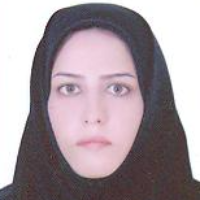The Effect of Nitrogen Form on Chemical Composition, Leaf Photosynthetic Pigments Concentration and Yield of Two Fodder Maize (Zea mays L.) Cultivars in Soilless Culture
The gradual decrease in the fertile soils surface due to environmental pollution and urbanization phenomena has reduced the possibility of sufficient fodder production. In addition, the strict dependency of the agricultural sector on water resources in an age of drastic climate change necessitates providing novel solutions for agricultural production. One of the methods that has gained attention for providing fodder is its production through soilless culture techniques. Maize can be a suitable option for fodder production in soilless culture due to high starch and sugar content, low seed cost, high biomass production, and rapid growth. Proper nutritional management of maize in soilless culture is highly important for increasing the quantity and quality of forage greenery. Little information is available regarding the impact of nitrogen form on the growth, yield and chemical composition of forage plants including maize in soilless culture. This experiment was conducted to investigate the effect of nitrogen form on the chemical composition, leaf photosynthetic pigments concentration and yield of two fodder maize (Zea mays L.) cultivars in soilless culture.
A factorial experiment based on randomized complete block design was conducted with the two factors of ammonium to nitrate ratio in the nutrient solution (0:100, 12.5:87.5, 25:75, 37.5:62.5 and 50:50) and maize cultivars (i.e., single cross hybrid 704 and single cross 410) and four replications in hydroponic culture at the greenhouse of Shahrekord University. After seed germination and emergence of the first two leaves, the maize seedlings were transferred to 10-liter plastic pots containing perlite (0.5-5 mm) and were manually fertigated with different ammonium to nitrate ratios on a daily basis. Before harvesting, chlorophyll a, b and (a+b), and carotenoids were quantified in leaves of plants. At the end of the tasseling stage, the plants were harvested. After harvesting, the root, stem, and leaf parts were separated, and the fresh weights of the samples were measured. Plant samples were dried in an oven at 60 °C. Then, dry weights of samples were measured and samples (root and leaf + stem) were ground for nutrient analysis including of N, P and K. Analysis of variance was performed using SAS software version 9.4. Means comparison was conducted using Duncan's multi-range test at p <0.05.
The results showed that in single-cross hybrid 704 and single-cross 410 cultivars, respectively, increasing the applied ammonium to 37.5% and 50% in the nutrient solution caused a significant increase in the shoot nitrogen concentration. Application of ammonium in the nutrient solution led to an increase in shoot and root phosphorus concentration in both maize cultivars compared to the nutrient solution without ammonium. The highest concentration of phosphorus in shoot (18.02 g.kg-1) was observed in the single-cross hybrid 704 cultivar when maize plants fed with a nutrient solution containing 50 percent ammonium, which was 3.2 times higher than the shoot phosphorus concentration in plants fed with nutrient solution without ammonium. Furthermore, at the 50:50 ammonium to nitrate ratio in the nutrient solution, the lowest root potassium concentration was recorded in both maize cultivars. In single-cross hybrid 704 cultivar, application of nutrient solution with ammonium to nitrate ratio of 50:50 resulted in a significant 31% decrease in leaf chlorophyll a concentration compared to plants fed with a nutrient solution containing 25% ammonium (with the highest chlorophyll content). The leaf chlorophyll a concentration in single-cross 410 cultivar showed an increasing trend with increasing ammonium in the nutrient solution up to 25 percent, and then a decreasing trend with further increase in the ammonium proportion. Moreover, a 31.4% significant decrease in chlorophyll b concentration was observed in plants fed with a 50:50 ammonium to nitrate ratio compared to plants fed with a 37.5: 62.5 ammonium to nitrate ratio. The highest leaf carotenoid concentration was recorded in single-cross hybrid 704 cultivar and at 25:75 ammonium to nitrate ratio, which was 1.4 times higher than the leaf carotenoid concentration compared to plants fed with nutrient solution without ammonium. The highest relative leaf moisture content was observed in the plants nourished with ammonium to nitrate ratio of 25:75, which showed a significant 20% increase compared to the ammonium-free nutrient solution. The results also indicated that the application of 50% of nitrogen in the form of ammonium in the nutrient solution led to a significant decrease in the leaf surface area of maize. The highest shoot and root fresh weights were obtained in the plants nourished with 25:75 ammonium to nitrate ratio and in the single-cross hybrid 704 cultivar. The results showed that the highest water (solution) use efficiency based on fresh weight was recorded in plants fed with 25:75 ammonium to nitrate ratio and in the single-cross hybrid 704 cultivar.
Based on the results of the present study, the highest shoot and root fresh weights of both maize cultivars were obtained in plants fed with 25:75 ammonium to nitrate ratio. Given the limitations of water resources and rainfall, optimal use of minimum water to produce maximum agricultural crops must be cnsidered. According to the results of this research, application of nutrient solution with ammonium to nitrate ratio of 50:50 led to ammonium toxicity and a reduction in forage yield in both maize cultivars. Therefore, replacing 25% nitrate in the nutrient solution with ammonium and selecting the single-cross hybrid 704 cultivar (due to higher yield compared to single cross 410 cultivar) is recommended to achieve maximum fodder yield in soilless culture under conditions similar to this study.
- حق عضویت دریافتی صرف حمایت از نشریات عضو و نگهداری، تکمیل و توسعه مگیران میشود.
- پرداخت حق اشتراک و دانلود مقالات اجازه بازنشر آن در سایر رسانههای چاپی و دیجیتال را به کاربر نمیدهد.




